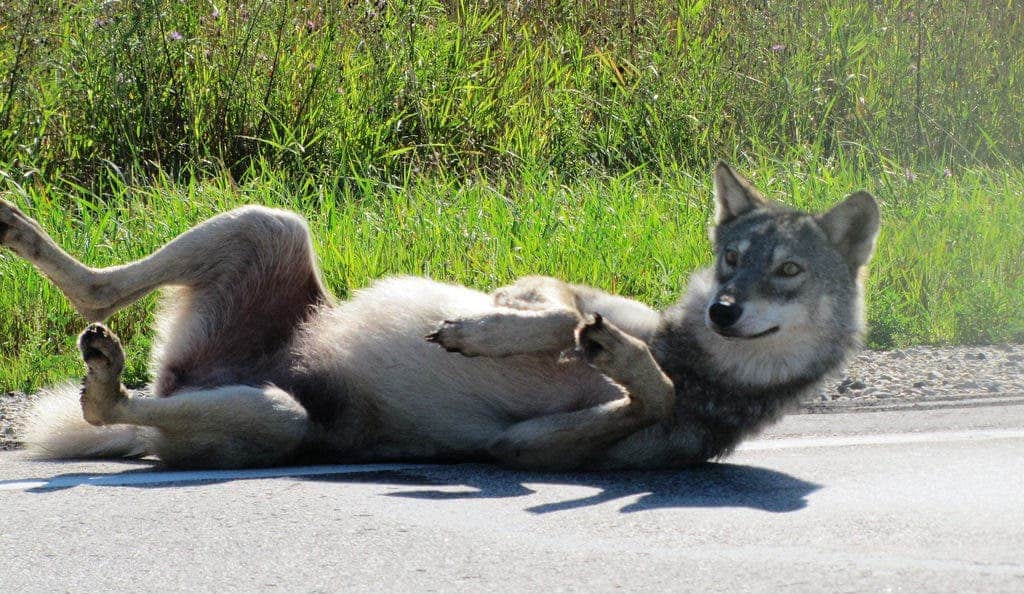Crying wolf isn’t what it used to be — today, we’re more likely to cry ‘hybrid’. Hundreds of years of the two species living in close proximity have left quite a lot of ‘dog’ in wild wolves’ genome, research shows.

An international research effort has uncovered that around 60% of Eurasian grey wolf (Canis lupus lupus) genomes carry inklings of domestic dog DNA. The phenomenon was less frequent in North American wolf populations. Such findings reinforce the idea that wolves and dogs have been cross-breeding for centuries in Europe and Asia.
Woof wolf
The team analyzed DNA data from grey wolves — the ancestors of man’s best friend — to see how much of it is still ‘original’, and how much of it was diluted with genes from domestic dogs. The research was prompted in part by our lack of proper understanding of the underlying genetic dynamics of wolf populations.
“The fact that wild wolves can cross-breed with dogs is well-documented, but little was previously known about how widespread this phenomenon has been and how it has affected the genetic composition of wild wolf populations,” says lead researcher Dr. Malgorzata Pilot.
Such knowledge is also important because grey wolves are a keystone species in their ecosystems — meaning they take an active and central role in maintaining its natural balance and functions. Wolves are a protected species but hybrids are not — their legal status is unregulated and remains uncertain thus far. So getting a better idea of where wolf-dog hybrids fit in the picture was necessary for us to better tailor regulations to the reality on the ground.
To that end, the team looked for a specific genetic variation in the DNA sequences of dogs and wolves, called SNPs — Single Nucleotide Polymorphisms. DNA sequences are formed of a chain of four nucleotide bases, and if one individual has a different nucleotide than the rest of its group in any four places in the sequence, it’s classified as an SNP. Based on these, the team was able to pinpoint where dog genes inserted themselves into the genome of wolves.
Despite the evidence of widespread hybridization between Eurasian grey wolves and dogs, the team notes, wolves have remained genetically distinct from dogs. This suggests that cross-breeding with dogs isn’t enough to blend the lines between the two species, provided it occurs at relatively low levels.
“We found that while hybridisation has not compromised the genetic distinctiveness of wolf populations, a large number of wild wolves in Eurasia carry a small proportion of gene variants derived from dogs, leading to the ambiguity of how we define genetically ‘pure wolves’,” Pilot adds.
The team notes that outward characteristics (phenotype) aren’t a reliable indicator of a wolf’s genetic ‘purity’. Some individuals that had been deemed pure wolves based on physical characteristics actually turned out to be of mixed ancestry once the team took a fine-toothed comb to their DNA. On the other hand, two specimens from Italy that sported unusual, strikingly black coats — which, as you may already suspect, is strange for grey wolves — turned out to have virtually pure genomes; the only evidence of cross-breeding the team could recover were dog-derived gene variants linked to dark fur coloration.
The findings go to show how ambiguous the definition of a genetically ‘pure’ wolf can become, how blurry the lines between hybrid and non-hybrid can get. This also means that using the trusty old MK.I eyeball to tell apart a hybrid from a true wolf can be very difficult if not impossible. Viewed in this light, current management strategies that call for the removal of suspected hybrids from wolf packs aren’t just inefficient — they’re laughably inefficient.
“Instead, our study has highlighted a need to reduce the factors which can cause hybridisation, such as abundance of free-ranging dogs, small wolf population sizes, and unregulated hunting.”
The paper “A new macroecological pattern: The latitudinal gradient in species range shape” has been published in the journal Global Ecology and Biogeography.


